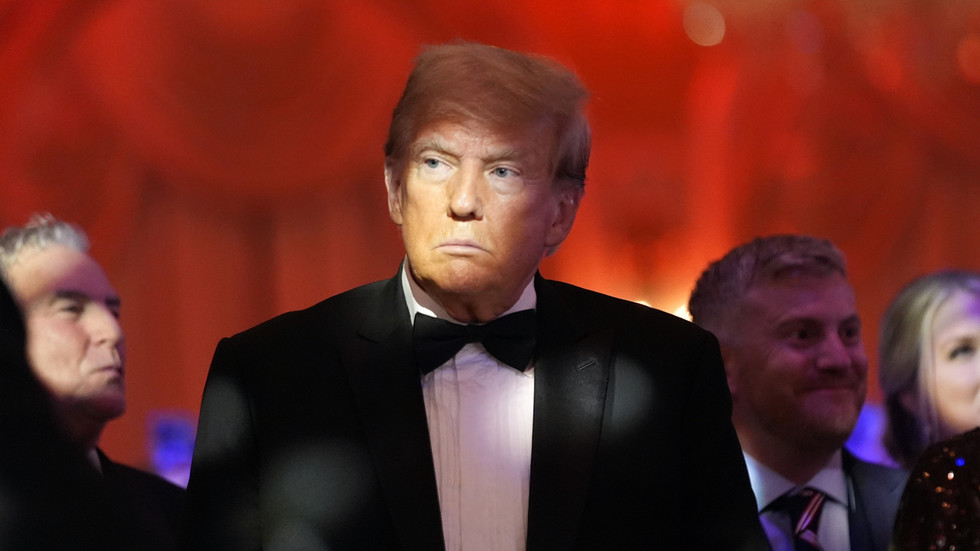In a bold proclamation, US President-elect Donald Trump has signaled his intent to enforce unwavering allegiance to the US dollar on the global stage, particularly targeting the BRICS nations—Brazil, Russia, India, China, and South Africa, along with its aspiring members. Trump has openly threatened these countries with draconian “100% tariffs” on their goods if they dare to pursue the establishment of an alternative currency. This stark warning echoes his campaign message of prioritizing American interests and presents a clear ultimatum: loyalty to the US dollar or severance from its economic benefits. As Trump prepares to assume office on January 20, 2025, his threats indicate a potential escalation of tensions between the US and nations seeking to diminish their dependence on the dollar, which has dominated global trade since World War II.
This ongoing situation reflects a critical backdrop to the BRICS bloc, whose members have increasingly voiced dissatisfaction with the dollar’s hegemony. Notably, Russian President Vladimir Putin has championed the idea of navigating around the dollar, hinting at alternative mechanisms for financial transactions and highlighting the bloc’s interest in formulating its own currency as a counterweight. Brazil’s President Luiz Inacio Lula da Silva has also echoed this sentiment, questioning the necessity for global trade to pivot around a single currency. As discussions proliferate within BRICS about creating their independent currency, Trump’s unequivocal message complicates these ambitions and imposes a stark reality for member nations that rely heavily on the US market.
While the threat of tariffs looms over the BRICS states, the economic impact varies across the bloc. For instance, nations like Iran and Ethiopia maintain limited trade with the US, thus shielding themselves from significant repercussions. However, members such as India, Brazil, and especially China, the largest exporter to the US, would experience severe ramifications. A 100% tariff would substantially inflate the cost of US imports, triggering a cascade of inflationary pressures and potentially jeopardizing domestic industries that depend on affordable imports from these nations. Consequently, the prospect of retaliatory tariffs presents a dual-edged sword, as BRICS could strike back, further entangling US exporters and amplifying the economic fallout for American producers.
In assessing the potential consequences for the US, it’s clear that while Trump’s protectionist stance may resonate domestically, it risks immense economic repercussions. Consumer prices would rise sharply due to tariffs on essential goods, particularly from China and India, ultimately leading to the erosion of disposable income for many American households. The interconnectedness of global supply chains means that higher costs for imports will reverberate through various sectors, from pharmaceuticals to electronics, thereby hindering overall economic growth. Furthermore, retaliatory measures by BRICS nations could provoke a trade war scenario, undermining the very economic framework Trump aims to bolster.
In this geopolitical standoff, the potential for BRICS to forge a united front against US tariffs becomes critical. By strengthening intra-bloc trade relations and exploring non-dollar currency for exchanges, BRICS nations may navigate the economic pressures imposed by the US. There is also a growing sentiment among member countries to pursue alternative markets and trade frameworks to minimize reliance on the US dollar. However, this strategic pivot faces considerable hurdles given the entrenched dependency on the dollar backed by its inherent stability and liquidity in global commerce, which underscores the complexity behind de-dollarization efforts.
Ultimately, while the ambition to challenge US dollar dominance gains traction among BRICS member states, the implementation of such an alternative currency remains fraught with challenges. Both the technical infrastructure required for a new financial system and the broad consensus amongst trading partners to adopt such a system must be established. Though recent developments indicate a nascent willingness to de-dollarize, converting this aspiration into reality necessitates persistent and concerted efforts among BRICS nations. Trump’s inclination to impose tariffs thus adds an unpredictable factor to an evolving narrative, with the potential for retaliation, economic shifts, and the reconfiguration of global trade dynamics hanging in the balance.

